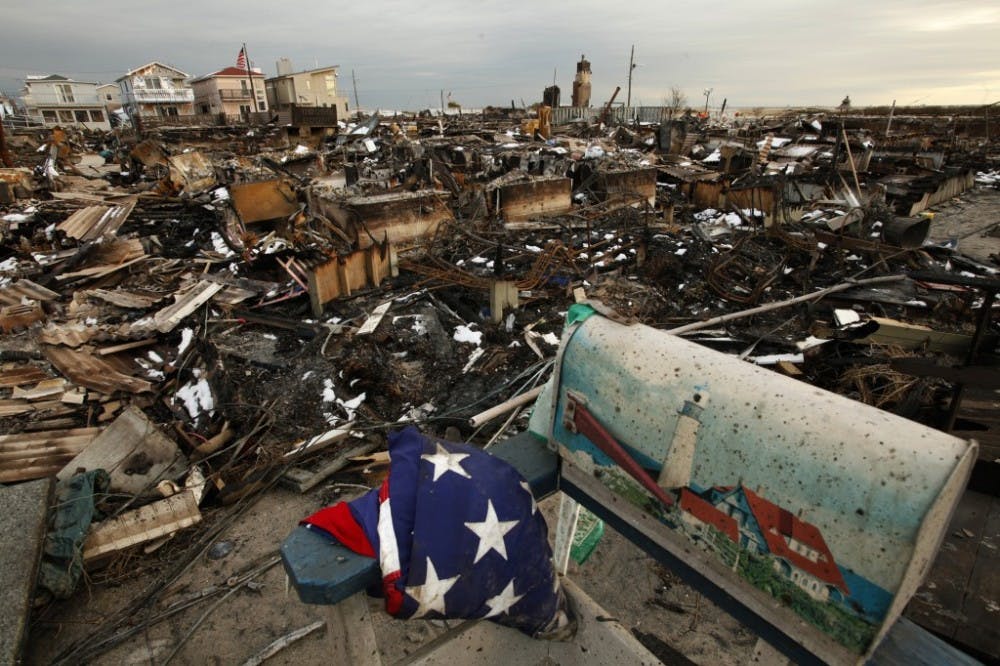Gale force winds and heavy rainfall proved a dangerous combination in the 24 states affected by Sandy, the most destructive Atlantic hurricane in history. The mid-Atlantic experienced the worst of the storm, which took 106 lives and caused an estimated $30-50 billion in damages, according to Eqecat, a national risk-modeling company. Though Elon University and the surrounding area only experienced rain and colder temperatures, the families and friends of several students were in the direct path of the storm
In Sandy’s aftermath, the university is currently coordinating an alternative break trip to New Jersey to assist in the rebuilding process.
Evan Small and Kayla Hicken, student service coordinators in the Kernodle Center, have been impressed with the level of student involvement and enthusiasm surrounding the recovery effort.
“It’s been great to see so much student initiative,” Hicken said. “It shows that people care.”
Areas in New York and New Jersey experienced the worst Sandy had to offer. According to freshman Nicole Petrosino, a resident of Hillsborough, NJ, many evacuated residents returned to find their homes demolished.
Coastal areas were especially hard hit. Petrosino, who has spent every summer she can remember on the Jersey Shore or Coney Island, fears the areas won’t be the same for a long time.
“Neither of them exist anymore in their previous conditions,” she said,
While coastal areas were the most damaged by the storm, they were far from the only places affected. Freshman Megan Cummins, from Clinton, NJ, said roads in Clinton are still blocked by downed trees and branches, posing a challenge to recovery efforts. Her town was still without power at the time of publication.
Cummins said the separation from her family during Sandy was difficult.
“I was checking Yahoo and the Weather Channel constantly,” she said. “I probably talked to my parents more within that week than I have since I’ve been here.”
Nicholas Cianciara, from Basking Ridge, NJ, agreed.
“In my family, I’m the ‘dad’ who stays home,” he said. “I was incredibly antsy the entire time. Not being there was so terrible.”
And Cianciara said he thinks effects will linger. NJ Governor Chris Christie has imposed a gas rationing system reminiscent of the shortages in the early 1980s, where license plates ending in odd and even numbers filled up on different days.
But gas shortages were only a secondary concern for those with missing family members.
Petrosino’s grandmother, Francine Berlin, a 70 year old resident of Nassau County, NY, was reported missing for two days during the worst of Sandy. After the storm died down, the Island Park fire department rafted through the flooded neighborhood to find Berlin clinging to a mattress.
Small said stories likes Petrosino’s are what have inspired students to volunteer. But he emphasized that the Kernodle Center, while an important resource, is not the only place students can go to help.
“A lot of it is providing our resources to ideas that are already happening,” he said. “We’re only one part of the response.”
According to Hicken, the center is working closely with Habitat for Humanity and the Students for Peace and Justice. Together, the organizations are planning several fundraisers to benefit Sandy relief efforts. One plan calls for a coat and blanket collection on campus.
But Cianciara has been frustrated by what he sees as a lack of response on the university’s behalf.
“Nothing physical is getting done quickly enough,” he said. “They need feet on the ground right now, helping out.”


